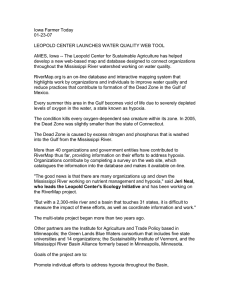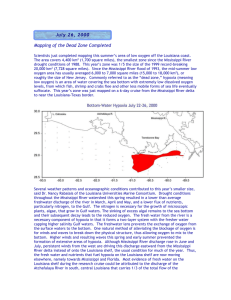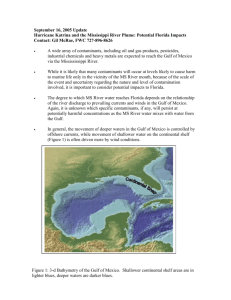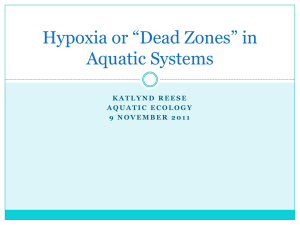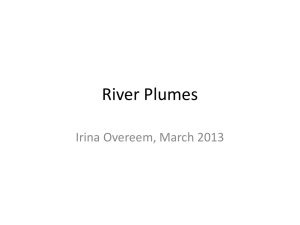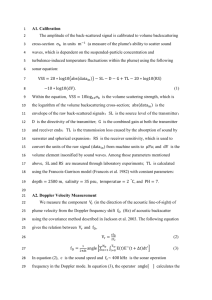Predicting hypoxia with MODIS/Aqua observed Mississippi River
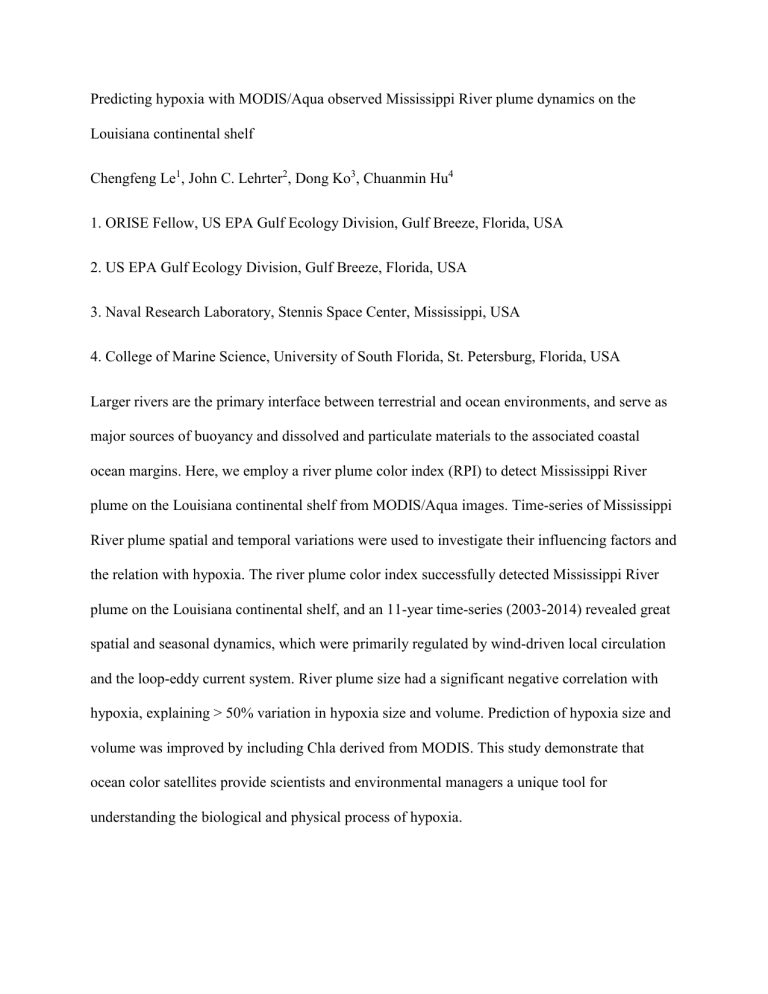
Predicting hypoxia with MODIS/Aqua observed Mississippi River plume dynamics on the
Louisiana continental shelf
Chengfeng Le
1
, John C. Lehrter
2
, Dong Ko
3
, Chuanmin Hu
4
1. ORISE Fellow, US EPA Gulf Ecology Division, Gulf Breeze, Florida, USA
2. US EPA Gulf Ecology Division, Gulf Breeze, Florida, USA
3. Naval Research Laboratory, Stennis Space Center, Mississippi, USA
4. College of Marine Science, University of South Florida, St. Petersburg, Florida, USA
Larger rivers are the primary interface between terrestrial and ocean environments, and serve as major sources of buoyancy and dissolved and particulate materials to the associated coastal ocean margins. Here, we employ a river plume color index (RPI) to detect Mississippi River plume on the Louisiana continental shelf from MODIS/Aqua images. Time-series of Mississippi
River plume spatial and temporal variations were used to investigate their influencing factors and the relation with hypoxia. The river plume color index successfully detected Mississippi River plume on the Louisiana continental shelf, and an 11-year time-series (2003-2014) revealed great spatial and seasonal dynamics, which were primarily regulated by wind-driven local circulation and the loop-eddy current system. River plume size had a significant negative correlation with hypoxia, explaining > 50% variation in hypoxia size and volume. Prediction of hypoxia size and volume was improved by including Chla derived from MODIS. This study demonstrate that ocean color satellites provide scientists and environmental managers a unique tool for understanding the biological and physical process of hypoxia.
